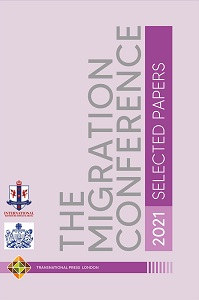Siberia’s Attractiveness for Migrants Evaluated Based on The Human Climatic Niche
Siberia’s Attractiveness for Migrants Evaluated Based on The Human Climatic Niche
Author(s): Amber J. Soja, Elena I. Parfenova, Nadezhda M. Tchebakova, Susan G. Conard
Subject(s): Energy and Environmental Studies, Migration Studies
Published by: Transnational Press London
Keywords: Siberia; migrants; human; climatic; niche;
Summary/Abstract: Past human migrations have been associated with climate change. As our civilizations and infrastructure developed, humans depended less on the external environment. Asian Russia is currently sparsely populated, with most of the population in southern regions of forest-steppe where fertile soils support agriculture and climate is reasonably temperate. We used current and predicted climate scenarios from 20 CMIP5 general circulation models to evaluate the potential comfort of climate for human settlement in various landscapes throughout the 21st century. We applied two CO2 Representative Concentration Pathway scenarios, RCP 2.6 representing mild climate change and RCP 8.5 representing more extreme changes, across Asian Russia. We used three climate indices that relate to human well-being: Ecological Landscape Potential, winter severity, and permafrost coverage. Climates predicted by the 2080s over Asian Russia would be warmer and milder without excessive aridity. The permafrost zone is projected to shift to the northeast. Ecological Landscape Potential in the current permafrost zone would increase from 'low' to 'relatively high' with a resulting higher capacity for human populations across Asian Russia. Understanding ecological landscape potential is crucial information for developing viable strategies for long-term economic and social adaptation to changing climate. We also conducted a GIS analysis of population density with climatic layers of warmth, water resources and climate severity. The resulting bioclimatic model Russia explained 38% of current variation in population density. We applied this population model to the RCP 8.5 scenario. Over most of the country, the potential population density would increase, but it would remain low in permafrost regions in Siberia and the Far East by 2080. This contrasts with demographic projections that the population in Russia may decrease by the mid-century from the present 146 million to 92-120 million people. Thus there will be much more suitable habitat than the expected population. This leaves open the possibility for migration from more southern areas where climate has become less tolerable.
Book: The Migration Conference 2021 Selected Papers
- Page Range: 299-303
- Page Count: 5
- Publication Year: 2021
- Language: English
- Content File-PDF

